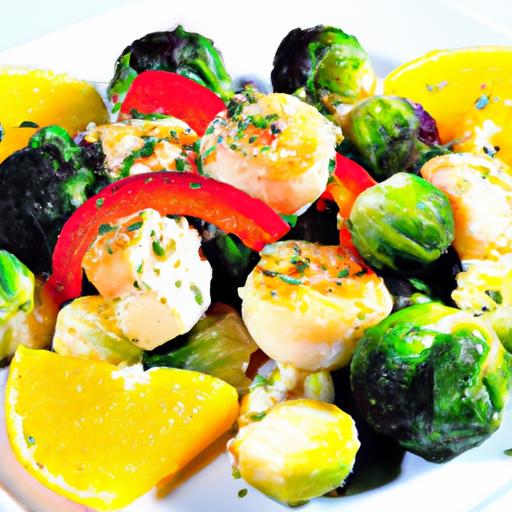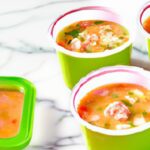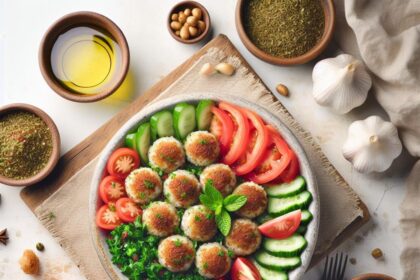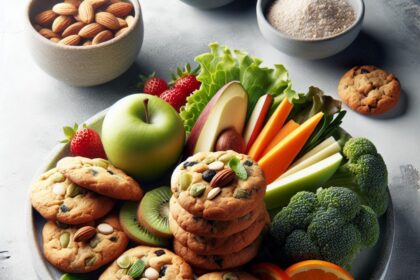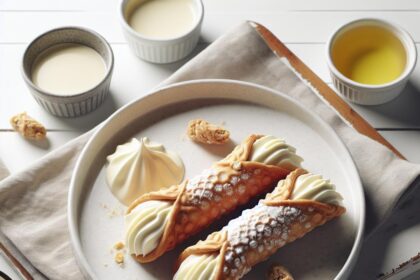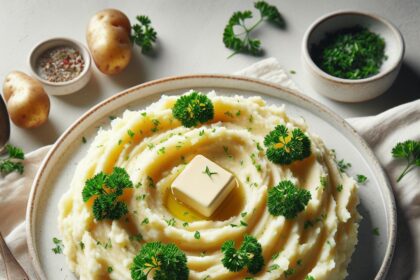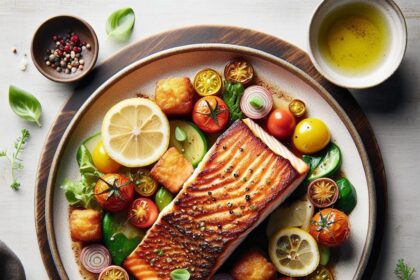In the kitchen, a humble jar of rendered fat holds more than just melted essence-it carries the stories of sizzling pans, slow-cooked roasts, and the art of transforming scraps into culinary gold. But when it’s time to store this versatile ingredient, a simple container isn’t enough; it needs a label that speaks clearly. What should you write on your jar of rendered fat? Whether you’re preserving lard, tallow, schmaltz, or any other golden treasure, the right label bridges kitchen efficiency and creative precision. Dive in as we explore the essential tips and clever ideas for labeling your rendered fat containers, turning your fridge into a well-organized pantry where every jar tells its delicious tale.
Labeling rendered fat starts with choosing the perfect name for your container, which is as important as the fat itself for preserving its quality and safety. Whether it’s silky duck fat, rich lard, or the deep, nutty flavor of homemade tallow, a clear and thoughtful label keeps your kitchen running smoothly and ensures your prized rendered fat stays fresh and flavorful with every use.
Prep and Cook Time
- Rendering Fat: 2 to 3 hours (depending on type and amount)
- Labeling and Organizing: 10-15 minutes
Yield
Approximately 1 to 2 cups of rendered fat per 2 pounds of raw fat trimmings.
Difficulty Level
Easy to Medium – The rendering is gentle and straightforward, while labeling requires creativity and precision for best results.
Ingredients for Your Rendered Fat Label
- Clean, air-tight container (glass or BPA-free plastic)
- Permanent marker or waterproof pen
- Printable adhesive labels or masking tape
- Date stamp or calendar (optional)
- Creative decorative elements (washi tape, small chalkboard tags, colored stickers)
Instructions for Organizing and Dating Your Rendered Fat Container
- Choose a clear, descriptive name that captures the essence of your fat, e.g., “Golden Duck Fat,” “Savory Pork Lard,” or “Classic Beef Tallow.” This helps instantly identify it in your fridge or pantry.
- Write important safety details on your label: Include the rendering date and recommended use-by period (usually 3-6 months refrigerated or 6-12 months frozen).
- Indicate the fat source to avoid confusion between different animal fats and to aid allergy awareness.
- Consider organizing by type or frequency of use. For example, keep frequently used fats closer and group specialty fats together with color-coded labeling.
- Attach your label securely on a flat side of the container to maintain readability and prevent peeling.
- Optional: Add a brief usage note such as “Perfect for roasting,” “Ideal for pie crusts,” or “Great for frying.” This adds a fun and practical touch to your kitchen workflow.
- Store containers appropriately: Refrigerate or freeze rendered fat, and always use clean utensils when scooping to avoid contamination.
Chef’s Notes for Labeling Rendered Fat
- Customize labels for inspiration: Use hand lettering, calligraphy, or printed fonts to give each container personality-it turns storage into a joyful visual.
- Try clear tape over paper labels to waterproof and preserve your handwritten details.
- Use chalkboard tags for reusable labeling that lets you update dates after refills.
- Keep a master inventory log either digitally or on paper to track long-term storage and fat rotation.
- Include allergen notes or diet specifics, such as “Grass-fed Beef” or “Pork-Free,” to accommodate kitchen users.
- If you render multiple fats, separate containers by fat type and flavor intensity to prevent cross-contamination of subtle profiles.
Serving Suggestions
Rendered fat is a powerhouse ingredient that elevates everything from roasted vegetables to flaky pastry crusts. When labeled effectively, reaching for your favorite fat becomes effortless:
- Roast potatoes and root vegetables with a spoonful of your robust lard for crispy exteriors and deep, mouthwatering flavor.
- Brush pie crusts or biscuits with rendered butter or tallow for flaky, golden finishes that wow every time.
- Use duck fat as a finishing drizzle on steamed greens or pan-seared meats for that extra layer of richness.
- Infuse garlic or rosemary directly into the fat container before sealing to create herbaceous oils ready for sautéing or dipping.
| Render Type | Typical Use | Shelf Life Refrigerated | Shelf Life Frozen |
|---|---|---|---|
| Duck Fat | Sautéing, roasting, finishing | 3-6 months | 8-12 months |
| Pork Lard | Pie crusts, frying, baking | 3-6 months | 6-9 months |
| Beef Tallow | High-heat frying, roasting | 4-6 months | 9-12 months |
For a detailed guide on rendering various fats, check out our Rendering Animal Fats Made Easy article. To dive deeper into food safety best practices for perishable products, visit the USDA Food Safety and Inspection Service.

Q&A
Q&A: Labeling Rendered Fat – What to Write on Your Container
Q1: Why is labeling rendered fat important?
A1: Labeling rendered fat isn’t just about staying organized; it’s about food safety, freshness, and culinary creativity. Proper labels help you track the type of fat, the date it was rendered, and even its best-use tips-making your cooking smoother and your dishes tastier!
Q2: What key information should I include on my rendered fat container?
A2: At minimum, your label should include:
- The type of fat (e.g., pork lard, beef tallow, duck fat)
- The rendering date
- Any seasoning or special treatment (optional)
- Storage instructions or intended use (optional but handy!)
Q3: How specific should the type of fat be?
A3: The more specific, the better! Instead of just “animal fat,” writing “applewood-smoked pork lard” or “grass-fed beef tallow” adds clarity and even a touch of gourmet flair. This lets you or anyone else cooking know exactly what flavor and quality to expect.
Q4: Should I include the date I rendered the fat?
A4: Absolutely. The date helps track freshness since rendered fat can last weeks to months in the fridge or freezer but does spoil eventually. A clear “Rendered on: 06/15/24” keeps spoilage surprises at bay.
Q5: What if I flavored or mixed my rendered fat?
A5: Noting any special infusions like garlic, rosemary, or smoked salts can be a game-changer. It alerts you to unique flavors and sparks inspiration for future recipes. Labels like “Rosemary-infused duck fat, rendered 6/15/24” paint a full picture.
Q6: Can I add storage tips to my label?
A6: Definitely! A simple “Keep refrigerated” or “Freeze for long-term storage” can remind you how best to preserve your precious fat until your next kitchen adventure.
Q7: What if I forget to label my container?
A7: It happens to the best of us! If you stumble upon an unlabeled container, check texture, smell, and color first-then consider tasting a small amount before cooking. Still, a label upfront saves guesswork and potential waste.
Q8: What kind of labels work best for rendered fat containers?
A8: Waterproof, oil-resistant labels or masking tape with a permanent marker are trusty choices. You want your info to stay legible despite grease smudges or moisture.
Q9: Can labeling enhance the presentation if I gift rendered fat?
A9: Yes! A beautifully handwritten or creatively designed label transforms your rendered fat from humble kitchen staple to artisanal gift. Include serving suggestions or recipe ideas to delight your foodie friends.
Q10: Any final pro tips for labeling rendered fat?
A10: Keep it simple but informative. Use abbreviations wisely. And think beyond the label-consider using different containers or lid colors to visually differentiate your fats at a glance!
Labeling your rendered fat might seem small, but it turns your culinary practice into a mindful, tasty art. Happy cooking!
Future Outlook
As you tuck that jar of rendered fat onto your pantry shelf, remember: the label is more than just a name. It’s your culinary compass, a timekeeper, and a story in miniature-guiding you through flavors past and future. Whether you mark it with the date, the type of fat, or a little cooking inspiration, a clear, thoughtful label ensures your kitchen creations stay delicious and safe. So next time you scoop that golden goodness, let your label do the talking-because every jar deserves a little personality and a whole lot of clarity. Happy cooking!